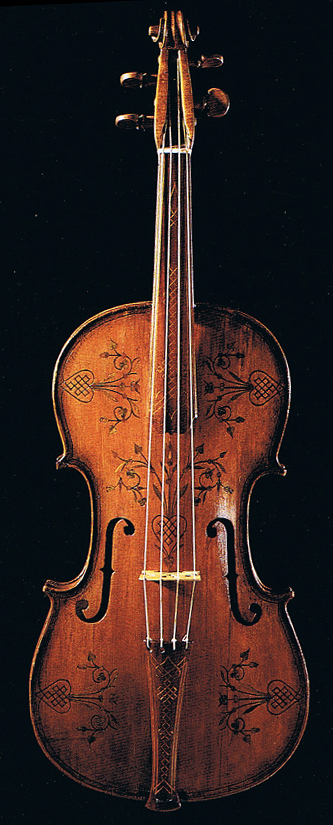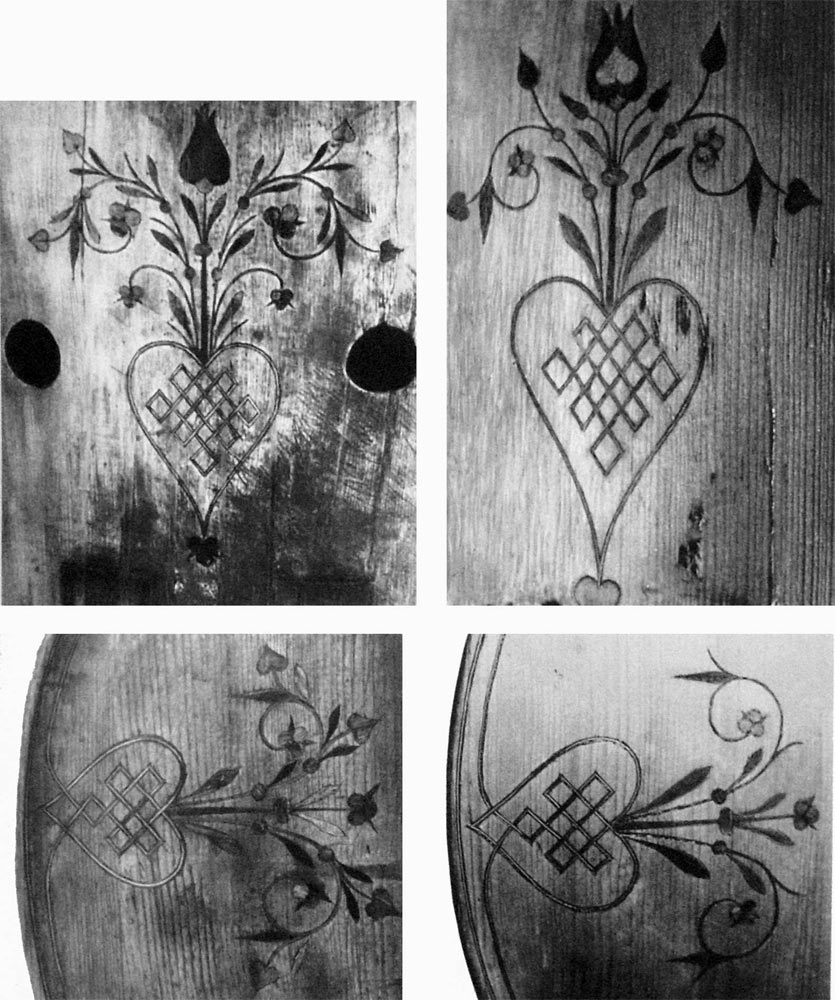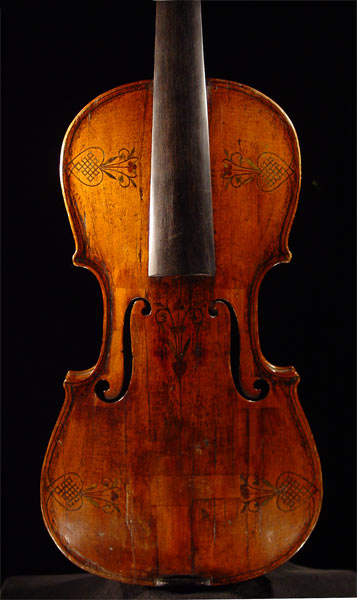 |
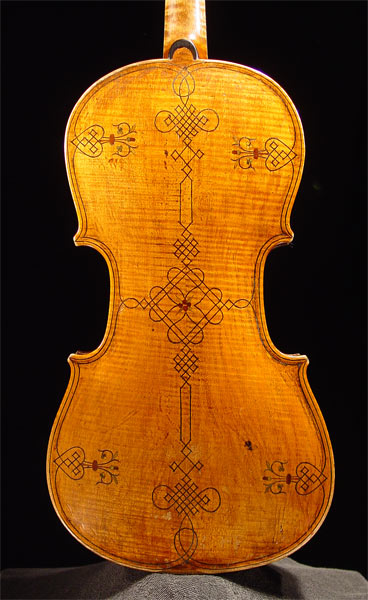 |
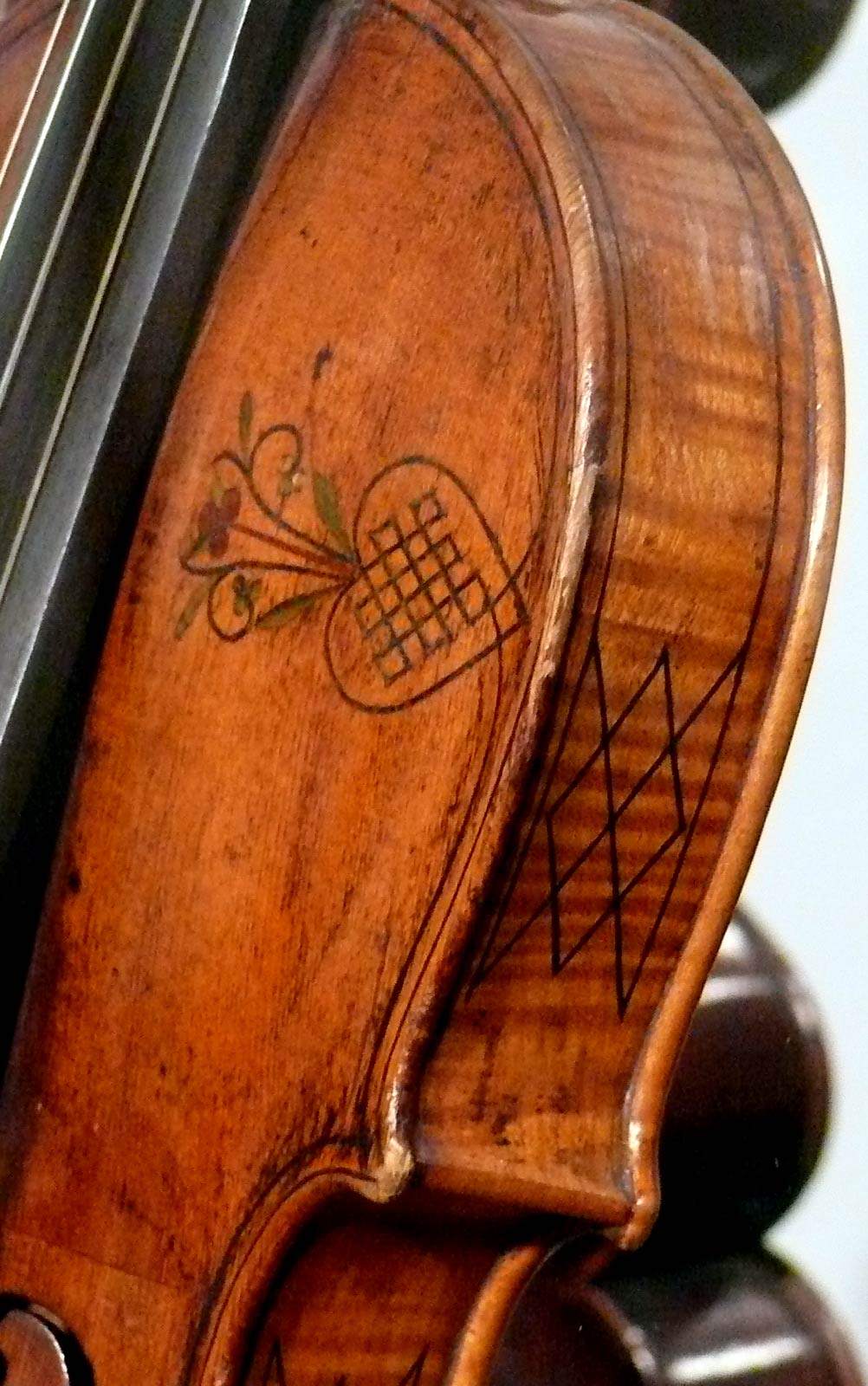 |
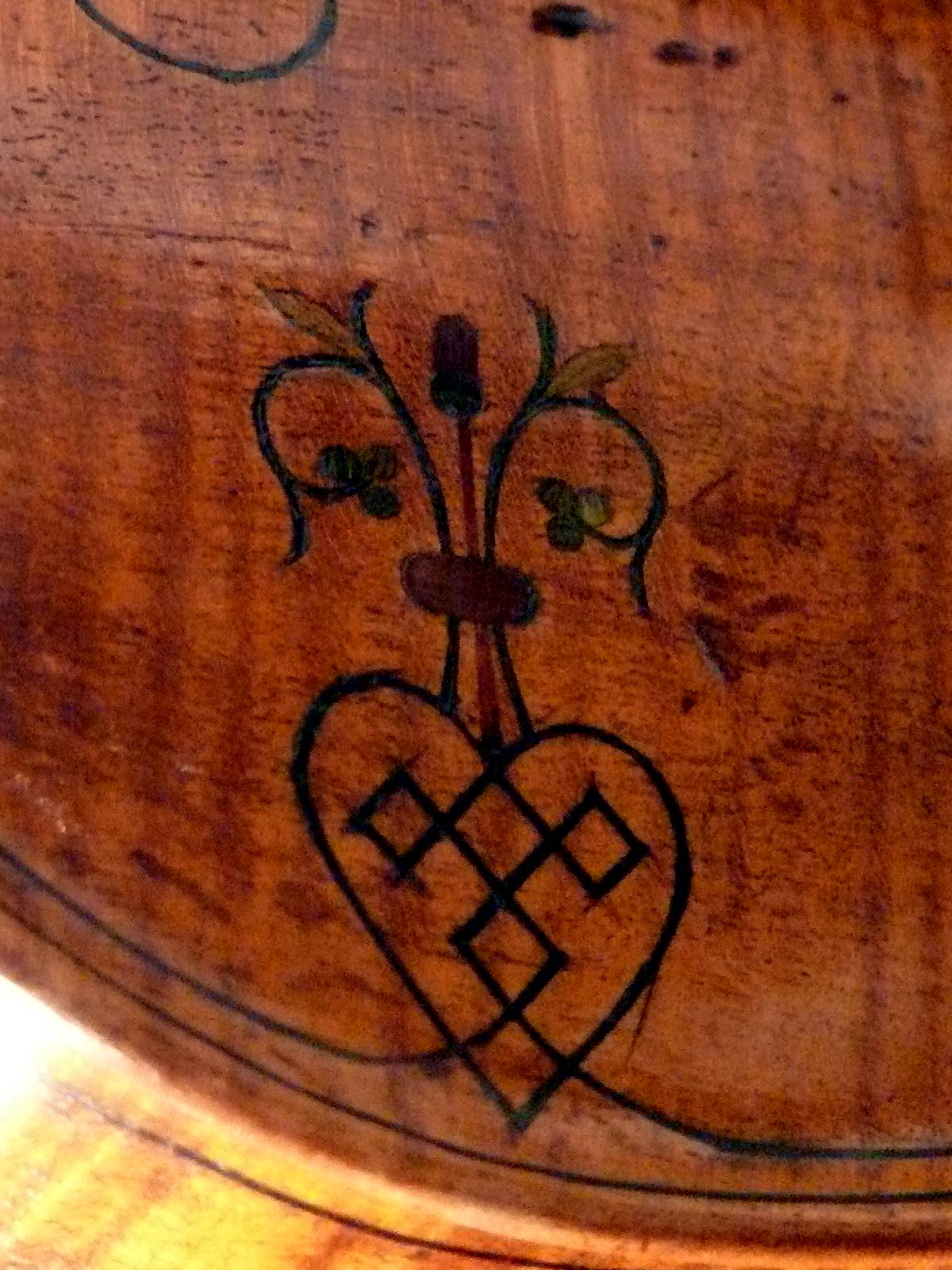 |
| A very rare example of the work of Hans Krouchdaler (Bern, Switzerland, ca. 1700), who, although residing in Bern, can be thought of as being a representative of the Alemanisch School. He was a pupil of perhaps the most significant luthier of this school, Joseph Meyer, from Pfaffenhausen, Germany. The Alemanisch School, also known as the Black Forest School, was an independent branch of the Art of Violin-making noted for its flamboyant ornamentation, very often all over the body of the instrument, as in our example. The intarsia or inlay work utilises woods of different coloration, giving the impression that the design has been painted. The Alemanisch School was prevalent in the regions between the Black Forest of Southern Germany and the Alpine regions of Switzerland and Austria (the region populated by the Alemanen Tribes) between the beginning of the 17th Century to the first part of the 18th, when this style suddenly disappeared, perhaps englobed by the established violin-making centers of Mittenwald, Füssen and northern Italy. In spite of the profuse ornamentation, these instruments sometimes have a remarkably good sound. |
Here an example of a viola by Hans Krouchdaler:
Ornaments on other instruments by this master:
Audio textes:
English / French / Spanish / Italian / German
| Body length | mm |
| Upper width | mm |
| Middle width | mm |
| Lower width | mm |
| Rib height | mm |
| String length | mm |
updated
